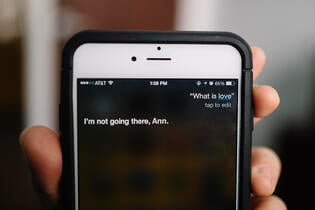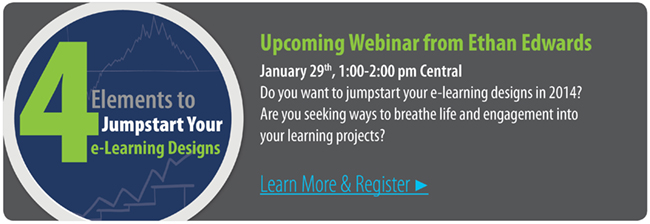Blog
Make a Learning Love Connection: Five FACTS for Better e-Learning Courses
by Ann Iverson, instructional designer

.png?width=1387&height=526&name=ann(250).png)
E-Learning Design for Constructive Failure: Unleash an Inner Genius
By Ann Iverson | January 27, 2014 | Custom Learning | 0 Comments
by Ann Iverson, instructional designer
.png?width=120&height=120&name=ann(250).png) “Anyone who has never made a mistake has never tried anything new.”
“Anyone who has never made a mistake has never tried anything new.”
― Albert Einstein
What was the last mistake you made? Not the huge kind from which you can’t recover, but the kind of mistake that stopped you in your tracks and made you ask, “What can I do differently next time?” If you can’t remember your last failure, perhaps you’re not taking enough risks. In fact, experts agree that if you’re not failing, you’re not really learning.
We often think of mistakes as detrimental to our performance―that “fail” is a four-letter word marking us as incompetent in the eyes of our co-workers and supervisors. Let’s face it, in our “failure is not an option” culture, we’re afraid to make mistakes! But failure is essential to real learning and can be our best teacher if we take the time to ask what went wrong. The true magic takes place when learners connect the dots from their mistakes to successful performance, when they move from, “I know I’m wrong, but I don’t know how to get it right” to “I see my mistakes and now I know what to do.”

Knowing that failure leads to learning, how can we design opportunities for constructive failure into e-learning solutions? How can we intentionally help learners fail so they learn to apply the very thing with which they struggle? At Allen Interactions, we leverage a CCAF-based design, which stands for Context, Challenge, Activity, Feedback, to ensure e-learning is meaningful, memorable and motivational.
We can also use CCAF to embed failure opportunities into those learning events. Let’s take a look:
Context: Are learners placed in realistic situations where mistakes occur?
Learning theory tells us that adults don’t like to make mistakes. E-learning presents a great opportunity for learners to fail in private and in a safe environment. Create a realistic context where learners can explore and take risks without forcing them to get all the “need-to-know” information upfront.
Challenge: Are learners given challenges like those that occur on the job?
Design the challenge by asking learners to solve a problem or make a decision without scoring every move right away. Creating an opportunity to play in a safe environment offers the chance for mistakes, which we know results in the greatest learning experiences.
Activity: Are learners provided with opportunities to make wrong choices before the instruction?
Try starting the activity without instruction. While this approach may make some stakeholders queasy, it engages learners immediately. Let them control how much information they need and when they need it. Provide clues and allow for self-reflection so learners can actually improve performance by learning from their mistakes.
Feedback: Are learners given guidance after making wrong choices?
Learners often receive negative feedback at the first sign of failure. Find creative ways to provide feedback that lets the learner make adjustments and feel successful in the learning process. Imagine feedback like this: “So close! You’re not quite there, but keep trying and you’ll find the answer soon!”
So think again about that mistake you made. I’ll bet you learned something memorable, more so than if someone simply told you what to do from the start. There’s a bit of Einstein in all of us. Allow yourself to make mistakes and unleash your inner genius!
Ann is an instructional designer for Allen Interactions who’s consulted for many years with a variety of clients, industries and projects. She learns best by making mistakes!
.png?width=135&height=135&name=Ann(250).png)
About the Author: Ann Iverson
Ann is an instructional designer for Allen Interactions who’s consulted for many years with a variety of clients, industries and projects. She learns best by making mistakes!
Comments
Would you like to leave a comment?
Related Blog Posts

By: Ann Iverson | Feb, 2015
Category: Custom Learning

Blog
Be an Advocate for Dumping the Information Dump
by Ann Iverson, instructional designer
By: Ann Iverson | Jul, 2014
Category: Custom Learning

Blog
5 Ways Clients Can Foster Success in an e-Learning Project
by Ann Iverson, instructional designer
By: Ann Iverson | Aug, 2015
Category: Custom Learning


